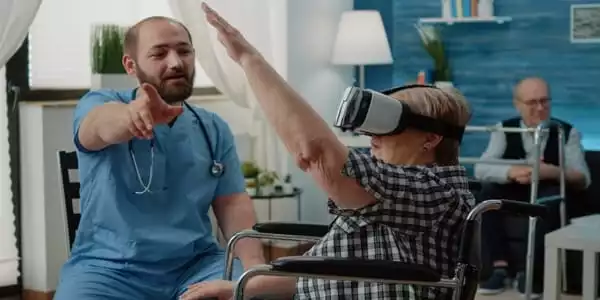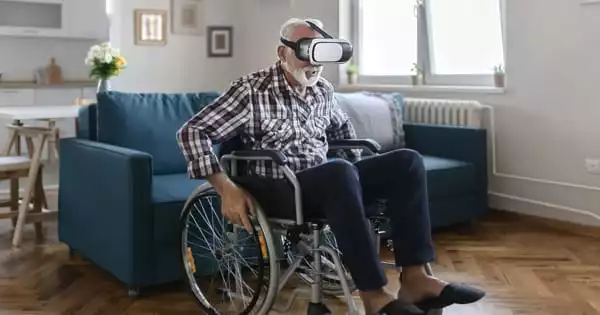Virtual reality therapy (VRT) is the application of virtual reality technology to psychiatric or occupational therapy, as well as to affect virtual rehabilitation. Patients undergoing virtual reality therapy navigate digitally created environments and complete specially designed tasks, which are often tailored to treat a specific ailment; and are designed to isolate the user from their surrounding sensory inputs and give the illusion of immersion inside a computer-generated, interactive virtual environment. This technology has been shown in clinical trials to be effective as a supplementary analgesic during burn wound dressing and other painful medical procedures.
According to a new survey, 30% of people would rather chat about their negative experiences with a virtual reality avatar than with a person. If you find it difficult to open up to a therapist, recent research reveals you’re not alone – and you may soon have a new choice.
According to an Edith Cowan University (ECU) study, 30% of respondents would rather chat about negative experiences with a virtual reality avatar than with a person. Researchers studied social interactions in which people engaged in virtual reality conversations to face-to-face encounters.
They employed full face and body motion capture technology to produce a’realistic motion avatar’ that closely resembled their real-life counterpart, and then studied how individuals interacted with avatars vs people.
Overall, respondents judged virtual reality social contact as similar to face-to-face engagement, with the exception of closeness, where people tended to feel a little closer with each other when face-to-face. This technology has the potential for broad application in a variety of fields such as casual chat, business, tourism, education, and treatment.
Dr. Shane Rogers
Dr. Shane Rogers, a psychologist and communication researcher, stated that participants judged their experience based on variables such as satisfaction, perceived comprehension, comfort, discomfort, and the extent to which they thought they gave information about themselves.
“Overall, respondents judged virtual reality social contact as similar to face-to-face engagement, with the exception of closeness, where people tended to feel a little closer with each other when face-to-face,” Dr Rogers added. While VR technology has been around for a while, Dr. Rogers believes that combining motion capture to augment VR might propel it into our daily life.
“This technology has the potential for broad application in a variety of fields such as casual chat, business, tourism, education, and treatment,” stated Dr. Rogers.

According to the study, 30% of participants preferred revealing bad experiences using VR. This means that counseling may be made available to new people who are uncomfortable with traditional face-to-face interactions.
“It may also allow therapists to conduct therapy more effectively from a distance, as a person can be in the therapist’s room (through virtual reality) while sitting in their own house.”
Better, more efficient design approaches will be required to improve the efficiency of our built surroundings. Virtual reality (VR) has already proven its worth as an effective AEC tool. VR technology allows architects to interact with their projects in previously imagined ways by translating 2D or 3D models into immersive, manipulable virtual environments. Many of the most difficult components of architectural work get streamlined and simplified by VR, allowing for superior ideas from both an aesthetic and a technical standpoint.
Architects can modify the position of the sun, photograph details, and even make three-dimensional notes inside a virtual building. They can see their designs with a highly realistic level of spatial depth and, perhaps more crucially, they can share that immersive experience with other stakeholders.
Dr. Rogers predicted that during the next five years, virtual reality social engagement would become normal rather than niche. “More powerful computers are becoming more accessible, VR headsets and peripherals are evolving, and more user-friendly VR interaction software platforms are becoming available and being upgraded,” he said.
As VR technology advances — both on the hardware and software fronts — it has officially evolved from a pleasant “novelty” to a useful and powerful architectural tool. Wireless VR, for example, allows users to disconnect from the real world and truly immerse themselves in the virtual space; advances in 3D rendering have made virtual environments appear more realistic than ever before; and the ability to optimize 3D objects and reduce polygon counts has helped reduce the load on graphics cards, resulting in a smoother, more realistic VR experience — i.e., better tracking an object.
The next steps in the research will be to look into how characteristics of the avatar (such as fidelity of motion and graphics) affect user experience, as well as to look into the possibilities of VR in therapeutic settings.
















